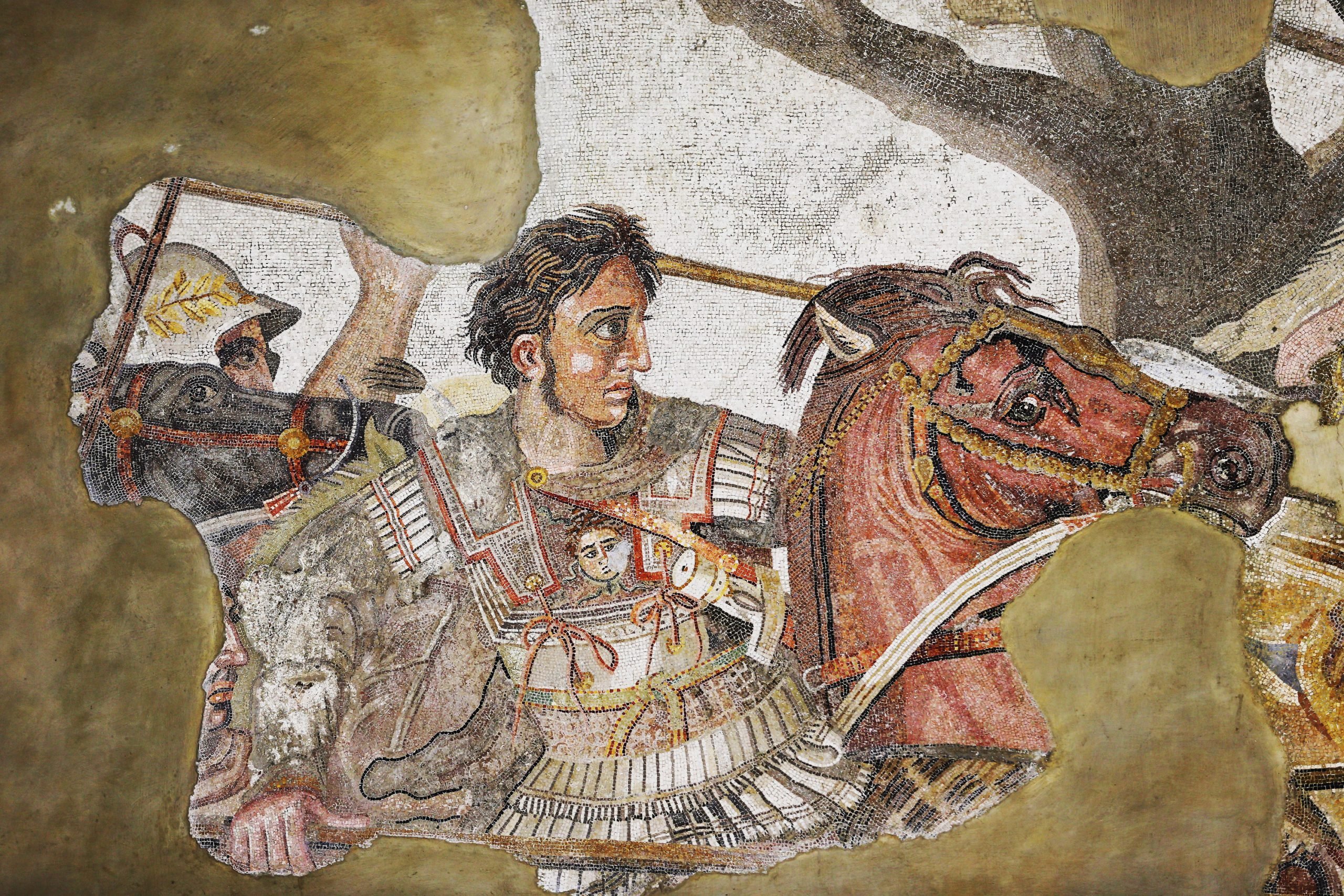
In life, Alexander the Great stamped his mark across the known world. Today, the search for tangible evidence of his fleeting existence continues.
While the prospect of uncovering Alexander’s tomb remains distant—despite decades of well-funded expeditions—a Greek academic, Antonis Bartsiokas, claims to have found a slender piece of his tunic. The assertion was made in an article published the Journal of Field Archaeology this month, though it has received considerable pushback from other Greek archaeologists.
The fragment isn’t newly uncovered—the more than 2,000-year-old purple-and-white cotton fabric was found in the late 1970s as part of excavations in northern Greece that uncovered a cluster of burial chambers. The leader of those excavations, Manolis Andronicos, a vaunted figure in Greek archaeological circles, argued the tomb and its possessions belonged to Alexander’s father, Philip II of Macedon.
This has long been the establishment view, on account of the wealth of gold, silver, and bronze found onsite. Andronicos furthermore concluded that the tombs at Vergina, a small town in northern Greece, were part of a vast complex belonging to the city of Aegae, the capital of Macedonia in the 4th century B.C.E.
Funerary wreath unearthed from the Macedonian royal tombs in Vergina, 350-325 B.C.E., in the collection of the Archaeological Museum of Thessaloniki. Photo: Ann Ronan Pictures / Print Collector / Getty Images.
By contrast, Bartsiokas, a physical anthropologist at Democritus University of Thrace, believes the tombs at Vergina belong to Alexander’s half-brother Philip III, the ill-fated king of Macedonia whose reign was ended in 317 B.C.E. by Olympias, Alexander’s mother. For evidence, Bartsiokas points to the frieze found in the tomb as well as the golden scepter and diadem, which he believes were held by Phillip III.
It’s the revival of an argument Bartsiokas made in 2000, when he claimed the markings on the human artifacts found in the tomb were inconsistent with injuries Philip II is known to have had.
As for the scrap of tunic, Bartsiokas argues the type and color of the fabric belong not to 4th-century Greece, but Persia, a territory Alexander eventually succeeded in conquering in 334 B.C.E.
The white of the fabric was made from the huntite, a mineral known for its brilliance that was relatively rare in Greece. The fabric was also dyed with a purple that was favored by the Persian elite on account of its rarity and exorbitant cost. Made from squeezing the gland of a sea snail (Bolinus brandaris, in case you’re curious), it’s known as Tyrian purple and in time became the color for many royal families.
A 2nd or 1st century B.C.E Marble bust of Alexander the Great. Photo: De Agostini via Getty Images.
How does Bartsiokas know the tunic belonged to Alexander? A frieze painted on the wall of the tomb, he argues, shows Alexander wearing a purple tunic amongst a Macedonian hunting scene. He believes it’s a sarapis, a purple tunic edged with a white stripe that was worn exclusively by Persian royalty, which would have been granted to Alexander following his conquest.
“The physical description exactly fits the description in the ancient sources of the sacred Persian mesoleucon sarapis which belonged to Pharaoh and King Alexander the Great,” Bartsiokas wrote in the article. “This sarapis is also depicted in the frieze and thus many of the artifacts in the tomb belonged to Alexander the Great.”
Not so fast, say other archaeologists. Stella Drougou, a professor at the Aristotle University of Thessaloniki who spearheaded excavations at Vergina, told ProtoThema: “In recent years, many theories about the Vergina tombs have circulated without considering excavation data. There’s fertile ground for speculation, but such discussions are baseless.”
According to the publication, neither Greece’s Ministry of Culture nor Drougou’s team were informed by Bartsiokas of his team’s findings.